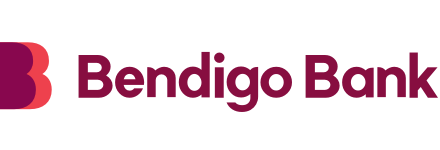There are pros and cons to freelancing. For all its benefits, freelancing means relinquishing the security of the regular pay check and the luxury of paid time off. Here’s how to plan for time off when it’s hard to make plans at all.
The freelancer's paradox: For every day of flexible hours and beachside Instagram posts smugly tagged #todaysoffice, there is a week of chasing invoices, dealing with unresponsive clients and, as a direct result of the aforementioned, managing spiking stress levels because rent is due in two weeks and you literally have no idea how you’re going to pay it.
Whether a client wants you to deliver high-quality work at the drop of a hat or cheekily hints that you should be on call after hours, unspoken expectations are a regular part of your day. These expectations seep into the psyches of the modern-day freelancer, because through unclear communication it is made very clear that if they are not available to take on the work, the work will go elsewhere.
Needless to say, for all its benefits – it can be stressful at times.
As much as you might flinch at the thought, it is both possible and important to take time off. It gives you a chance to unwind and reflect, and will bring you back to work refreshed and full of ideas.
And with a bit of planning, it’s possible to actually enjoy yourself. Here’s what to do.
Preparation is key

So, you know you want to take time off and you know how long - but you’re not sure when. Time to turn to your trusty calendar.
- Look at least 3 months into the future and find a time when you are free of work.
- Grab a thick red permanent marker (or its digital equivalent. But less face it, the permanent marker is more satisfying) and block the time out.
Congratulations, you’re just locked in your time off!
Give ongoing clients the heads up
If you have long-term ongoing clients, you’ll want to let them know your plans as soon as you do.
They’ll appreciate the heads up, it will give them enough time to plan for your time off and re-jig what they need to make it work. It will also open conversations up to securing work for your return, so you don’t come back to crickets.
Become a ‘no’ person
This might go against every motivational quote you’ve read in the last 5 years but there is a lot of power in saying no. Saying no communicates clear boundaries, demonstrates that you know your worth and sends a clear message that you fear nothing (okay that last point is pretty intense, but you get the picture).
You don’t have to go too in-depth when you say no. For a new project, it can be as simple as:
“Thank you for being in touch. I’m unable to take on new projects until [date, after your holiday], so I won’t be able to help out in this instance unfortunately. I’m taking time off in [month] and so my books are full in the lead up. Do let me know if anything pops up after [month], it would be great to work together.”
Pretty straight forward.
If a prospective client has reached out to you once, it means you’re on their radar which is something. In the life of the freelancer, nothing is ever guaranteed so these little wins are worth celebrating.
Lean on your network
There are two types of freelancers: Those who aren’t afraid to recommend a ‘competitor’ to a potential client and those who are.
There are immense benefits of sharing work with those in your network, especially those who might be typically seen as competitors. The respect between you will grow, you will cultivate a supportive relationship and you have someone to throw work to when you are taking time off – and they might even do the same thing for you.
If you have a strong relationship with your clients, they will come back.
Sometimes though, they might move on to someone else and it can have nothing to do with your performance. One of the keys to unlocking a less-stressful experience as a freelancer is to develop the ‘freelance zen’ and remember that nothing is permanent.

Turn on your out of office
This is one of the best hacks to take the pressure off when you’re on holidays.
Set up a detailed out of office letting people know a) that you’re unavailable, b) when you’ll be back, and c) how to get in touch if it’s urgent.
Doing this means you have all your bases covered. If something comes up that simply can’t wait, they will find a way to get in touch. They always do!
Accept that you might miss out
If you’re committing to a real life, email-free holiday, you’ll need to accept that you might miss out on some opportunities while you’re away.
Take them in your stride, respond to each person kindly after you return and let them know you’d love to collaborate in the future.
Put aside a bit of money
As a new freelancer, you’ll learn pretty quickly that you can’t rely 100% on your plans. As a seasoned freelancer, you probably just chuckled at that sentence.
Always, always invest in setting aside a bit of money for a rainy day. Even if it’s just a month’s worth of expenses to keep you afloat. Because more often than not, it will come one day. And it’s best to be prepared.





